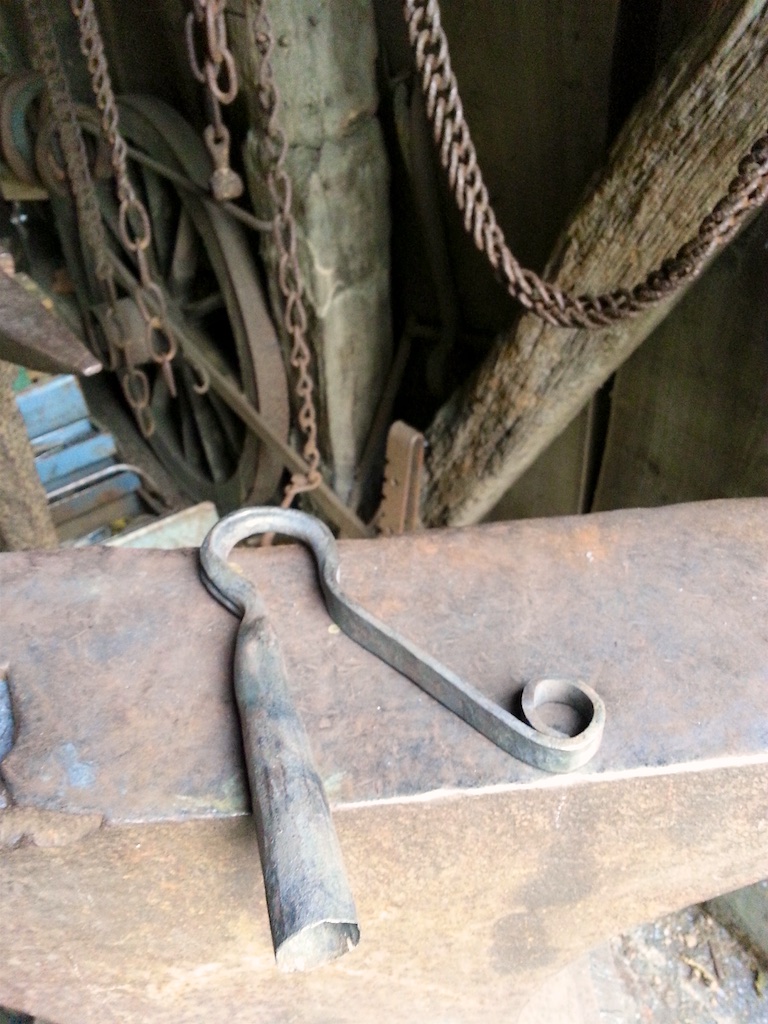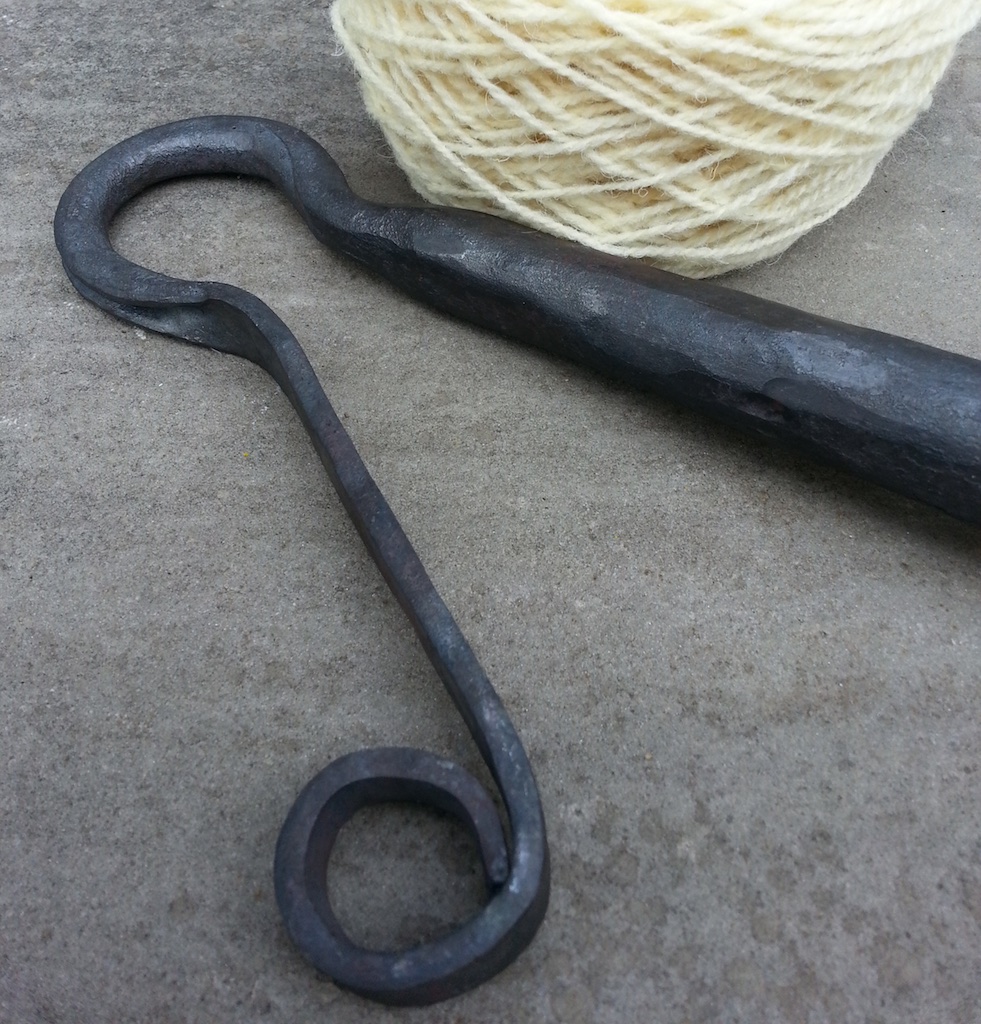As an amuse-bouche for tonight’s post with Louise Spong from South Downs Yarn, we hear from her about a very special shepherd’s crook. With Louise’s natural curiosity, it was not enough to just know about the hook. She actually made one herself! So, here’s Louise, on the Pyecombe Hook:

Ah, therein lies a tale or two! We have local writer Barclay Wills to thank for chronicling so much of what we now know about Sussex shepherds of the early C20th. Whilst the flock books of the C19th and early C20th are a record of landowners, Barclay Wills recorded the details of the lives of the shepherds who worked for those landowners. Without him and Arthur Beckett’s Sussex County Magazine which published much of Wills’s work we would not have the tales and memories of those shepherds who themselves could recall the traditions and work of the shepherds and blacksmiths of the second half of the C19th. What we learn from Wills is that there were many local forges including an ancient one at Saddlescombe farm but three forges in particular were esteemed by Sussex shepherds and were famed not only in Sussex but throughout Britain and abroad.
Those forges were at Pyecombe, Falmer and Kingston-on-Lewes in East Sussex. The Pyecombe hook taking its name from the former, and coined a style of crook. Anyone looking at a Pyecombe or Pyecombe-style hook will be struck by its small head. It is designed to catch sheep by the hind leg rather than the neck. There is a lovely description about its use by Charles Mitchell one of the Pyecombe blacksmiths: “the curve is made so that the shepherd can hook it around the sheep’s leg, slide it up, give it a slight twist, and the sheep is caught fast without being in the least hurt”[1] I have also been told that in the main the hook was needed because sheep would get stuck in hedges and bushes and the only part of the sheep that was visible were its hind quarters, so a neck crook was not useful.
Many of the hooks favoured in Sussex were made from decomissioned gun barrels found on the South Downs after the Napoleonic Wars. The forges would have their own distinctive patterns and shapes and individual shepherds would ask blacksmiths for particular specifications. It was quite common for a shepherd to have a working crook and one for best. In Sussex hazel was favoured for the crook stick, although ash and occasionally holly were also used.
The Weald & Downland Museum offers a wide variety of courses and I signed up to go on their ‘Irons in Fire’ workshop as soon as I discovered it. Not only do you get to make a Pyecombe style hook taught by the knowledgeable and talented Sussex blacksmith Martin Fox, you also get to do this in the Museum’s mid C19th smithy using old fashioned bellows. I loved every second of it and only after all the hard work did I come to truly appreciate the skill of those amazing blacksmiths from the Sussex forges.

[1] Where Pyecombe Crooks Are Made by Beatrice Adams, Sussex County Magazine 1935